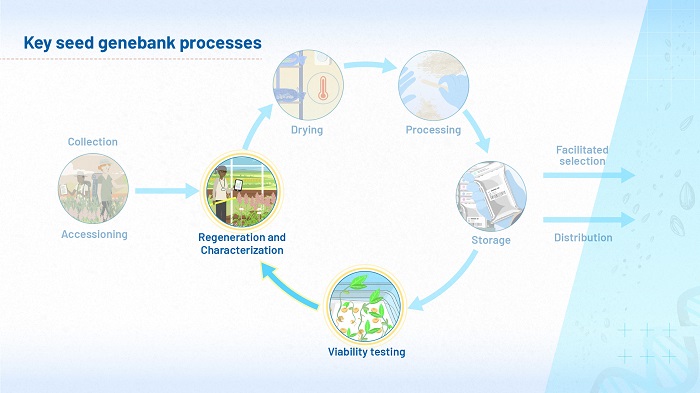Overview of genebank processes

This module focuses on the biology of germination and dormancy. It will help you to successfully carry out viability testing and regeneration, the two processes highlighted in Figure 1.
A crucial objective in the management of seeds is to ensure they are able to germinate. Genebanks invest a lot of resources in viability testing: it begins soon after the seeds arrive, before they are packed and placed in the genebank, and continues with regular germination tests while the seeds are in storage. To what extent can the results of all this testing be relied upon?
If a germination test indicates that viability is low, the seeds must be regenerated, yet the process of regeneration can bring its own risks. Depending on the species, it is possible that the new generation of seeds could be different from the original accession, perhaps because of cross-pollination, genetic drift, pollen contamination, seed contamination or even mislabeling. Here, we consider ways to carry out regeneration that will help to ensure the characteristics of the next generation of seeds are as close as possible to those of the original sample.
Dormancy is one reason why seeds may appear to fail to germinate, when in fact they are perfectly capable of doing so. By mistaking dormancy for low viability, you could initiate unnecessary cycles of regeneration. In some species, dormancy may be broken by the cold, dry conditions of storage. In others, dormancy may be broken by heat or chemicals. There are many types of dormancy, but they can be overcome. By the end of this module, you will appreciate the main mechanisms of dormancy, and some common laboratory techniques for tackling it.
Introduction
